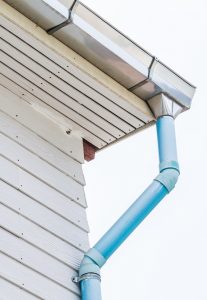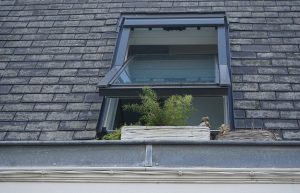Roof Flashing 101: Everything You Need to Know

Roof Flashing 101: Everything You Need to Know
Are you having problems with water dripping from the ceiling after every rain shower? If you are, then there is something wrong with the roof. Well, not “something,” since it’s most likely that you are either missing the flashings or they are severely damaged so they do not perform their main function. In case you are wondering what flashings are exactly, they are a form of isolation that ensures your roof does not leak. It is mostly installed on its edges and more importantly, around any openings in the roof, such as the chimney, skylight or the ventilation pipe. Basically, flashings prevent the water from seeping through the smallest of holes that might exist in your roof structure. If you thought that you need not read on, you were wrong, as flashings are much more complex than this. They serve other purposes and can come in a number of shapes and functions.

Directing water to the gutter
Despite its primary role, flashings can have an additional function on roofs with two or more slopes. Since they are installed at the seams of the roof, they intersect to form a provisional drain that can direct water downwards into the gutter. This is really useful because it does away with the need of installing additional gutters for larger houses and the ones with zig-zag roofs and gables.
Chimney flashing
The oldest and the most common type of flashing is the chimney flashing. It is at the same time the most intricate kind of flashing in terms of the shape. It is flat at the place where the chimney protrudes from the roof structure. Then it is diagonal, or step flashing as it is called, along the steep edges of the chimney and the roof and finally there is saddle flashing at the very top. Because the angles are hard to cover, the flashing on the chimney is let into the mortar in order for it to stick better. This way, rainwater simply has nowhere else to go but down the roof and into the horizontal gutter.
Skylights
For some reason, people who have slated roofs in their homes always opt to install skylight no matter the cost. The aesthetic appeal is undisputable, but they do not think that such a window set at an angle is at the mercy of the elements. Were it not for skylight flashing, the highest room in the house would turn into a pool. Most skylights come with integrated flashing, but their curves are flashed additionally just in order to be safe. The method of this particular flashing is similar to the one used for chimneys.
Lead flashing
The material used for flashing is mostly lead, but nowadays there is also flashing made from plastic, rubber, and zinc. However, there is a good reason why lead is the oldest in use material for flashing. It has a high density, but it can be easily worked with, as well as being durable and lasting for over a hundred years. This is especially important in places such as Australia, where roofs have to withstand the relentless pounding of the elements season after season. This is why any good quality lead flashings in Sydney must have environmental credentials to ensure the purity of the lead that is reusable. This way, it will be considered a green building material with a low carbon print.
Easy to install
Even lead flashings are surprisingly easy to install. They are malleable so putting them into place is not as hard as it seems, but it still requires an expert hand. Flashings are cut from pre-fabricated rolls of metal so there is no delay at the construction site waiting for them to be made.
Vent pipe flashing
Many houses today are being refitted with new exhaust hoods that need vents. These are often drilled straight through the roof construction and left like that by the handymen. They do put some water protection, but it is insufficient as only a flashing can permanently seal such holes off. Specially designed vent pipe flashings have a cone base which is set directly into the shingles. It is further strengthened with a second layer of counter flashing. In general, the smaller the hole, the harder it is to seal it off.
Protecting the drip edge
So far we have only discussed roof seams. Water actually quite often penetrates the roof at the very edge. This is called a drip edge as it directs the water down towards the gutters. Since it is mostly made of wood, poor construction gets this wood into contact with water and it slowly rots away. That is why a narrow layer of flashing is installed here, so as to prevent drip edges from deteriorating.
The next time you clean the gutters inspect the state of your flashings and if you notice a problem, tend to it immediately. Any failure to immediately react can result in irreversible water damage to the roof structure.

Comments are closed